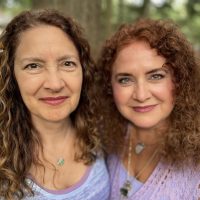Healing from childhood trauma can feel like you’re trying to gather up the pieces of yourself and put them back together. If you were raised in a home with abuse, addiction, mental illness, and other adverse experiences, you probably survived by living in a state of denial, which means that you were continually telling yourself that the terrible things you were seeing, hearing, and feeling weren’t really happening.
If you were physically, sexually, or emotionally abused, you may have “checked out” altogether, or detached from what you were experiencing, in order to live through it. The sensations in your body were uncomfortable, distressing, and perhaps frightening. Self-numbing, or “leaving” the body, provides relief from that pain, but can become a habit. In order to truly heal, survivors have to “come back” to their bodies and reclaim their sense of wholeness.
Moving from your mind to your body
If you felt unsafe, and so detached from your body regularly, you likely have spent much of your life living in your mind. Your thoughts may draw you backward, and memories that arise may leave you feeling sadness, anger, or regret. Or, you may spend your time thinking about the future which, for survivors, usually leaves us feeling anxious or worried.
The easiest place to find peace is in the present moment. Fortunately, concentrating on the “now” is also the quickest path back to feeling safe in your body.
Here are some ways that can help you “come back” to your body and find your power:
- Begin with your breath. For survivors of severe trauma, just breathing deeply can be scary. That’s because when you concentrate on your breath, you can’t help but notice your body. If your childhood taught you that it wasn’t safe to be in your body, a deep breath can bring up strong feelings of anxiety or fear. If this is true for you, start slowly.
If it feels safe, close your eyes, and place your hands on your belly. Simply focus on feeling your breath in your belly as it enters and leaves your body. If that’s uncomfortable, you can focus on your ribs, chest, or even nostrils. Find a place that feels safe and comfortable, and simply notice what happens in your body as you breathe. For most people, focusing on the breath not only roots them in their body, but in the present moment, where everything is just fine.
- Give your body your full attention. Survivors of childhood trauma often develop the habit of ignoring their body (or bodily sensations), again, because they experienced their body as a source of pain. In more severe cases, people may not be able to tell if they’re feeling hungry or tired. They may not be able to accurately label the emotions that they’re experiencing.
But again, you can turn this around. Your body has a wealth of messages for you and, with practice, you can create a space where you can safely listen to and process them. Research in neuroscience tells us that “the body keeps the score” — it knows what happened to us and it remembers. Aches and pains, as well as emotions that seem to rise out of nowhere, can be remnants of our past waiting to be noticed and honored.
While it might feel scary at first, if you sit quietly with a sense of curiosity and just see what comes up, you can find tremendous opportunities for deeper healing. For us, many times this kind of quiet sitting brought up unprocessed emotions. We might begin to cry, seemingly “out of nowhere.” We’ve come to understand that what we’re doing is giving our body permission to release the pain that we tried to deny years ago. We may have left our body mentally, but the trauma did not. Now that we’re in a healthier place, it feels safe to revisit it, let it speak, and then release it.
- Move your body consciously. The next step in reconnecting to your body is focusing on bodily awareness. As you move through your daily routine, try to remind yourself to fully notice and appreciate what your body is doing. Are you strong enough to lift heavy objects? Does your body move through space smoothly or gracefully? Are you flexible, able to bend, stoop, or stretch with ease? How does it feel to do these things?
We invite you to touch or stroke your body. Notice how it feels to you. In this way, you’re cultivating a deliberate appreciation for your body and all that you can do with it. We found practicing yoga to be extremely helpful for bringing our attention to how we move and increasing our enjoyment of our bodies.
- Moving with joy. Now that you’re aware of your body, what it does well, and what you enjoy doing in it, do more of it! With greater body awareness and confidence, you might decide to try a new activity or to move your body in a new way. Follow your own inner guidance as to what will truly light you up.
Returning to your body is fundamental to creating a joyful life. Your body kept you safe when you needed protecting, and you survived your childhood. Now, as you reconnect fully with your body, you’ll experience the sense of wholeness this brings. And you’ll be ready for the deeper layers of healing to come.
* * *
Ronni Tichenor has a PhD in sociology, specializing in family studies, from the University of Michigan. Jennie Weaver received her degree from the Vanderbilt School of Nursing and is a board-certified family nurse practitioner with over 25 years of experience in family practice and mental health. Their new book, Healing Begins with Us: Breaking the Cycle of Trauma and Abuse and Rebuilding the Sibling Bond (HeartWisdom LLC, April 5, 2022), shares their inspiring and hopeful story of healing from their painful upbringing.









Read 0 comments and reply